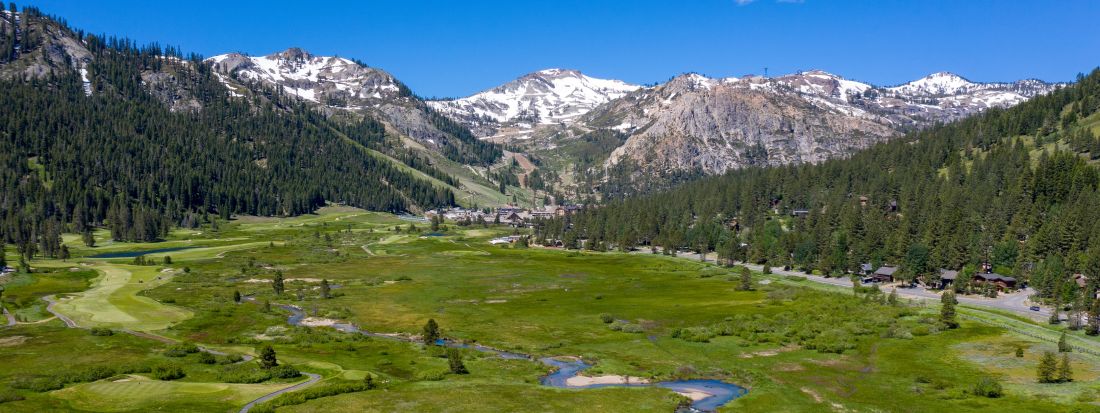
Olympic Valley, in addition to being home to Palisades Tahoe, a world-class ski resort, has been the site of a fierce development battle between residents of the region and Alterra. The Village at Palisades Tahoe Specific Plan is a sweeping 25-year vision for development in Olympic Valley. Its primary stated goal is to transform Palisades Tahoe into a year-round vacation destination with more lodging and amenities. The development would add nearly 1,500 bedrooms across 800 units of condos, timeshares, and hotel rooms. These lodging facilities would be largely concentrated in a ‘Village Core’ that would include extensive retail and dining and would prioritize pedestrian access.
Year-round recreation opportunities in the plan are concentrated in a 90,000-square-foot Mountain Adventure Camp. The specific plan indicates the Mountain Adventure Camp could include a thirty-lane bowling alley, a movie theater, indoor rock climbing walls, and an arcade. The Mountain Adventure Camp has received some of the harshest criticism of the entire project, with many people questioning why the Lake Tahoe region needs a massive indoor recreation facility when many travel to the region for outdoor recreation.
Development plans were first submitted to Placer County in 2012 by private equity firm KSL Capital Partners, who owned the resort at the time. The initial plan called for a larger village area with more condos and hotels, closer to the limits set out in the Olympic Valley General Plan from 1983. General plans for communities and areas like Olympic Valley are made and approved by local governments to lay out a vision for development including the overall size and character of what can be built in the future. In 1983, Palisades Tahoe was a much smaller resort, albeit still with a world-renowned reputation. The base area and housing available in Olympic Valley in 1983 were a tiny fraction of what they are today, and the county had big plans for development. By the time the Village at Palisades Specific Plan came along, attitudes had changed, and the revisions that came over the next three years focused on downsizing the village core and including more employee housing. In April 2015, Placer County began its environmental impact analysis.
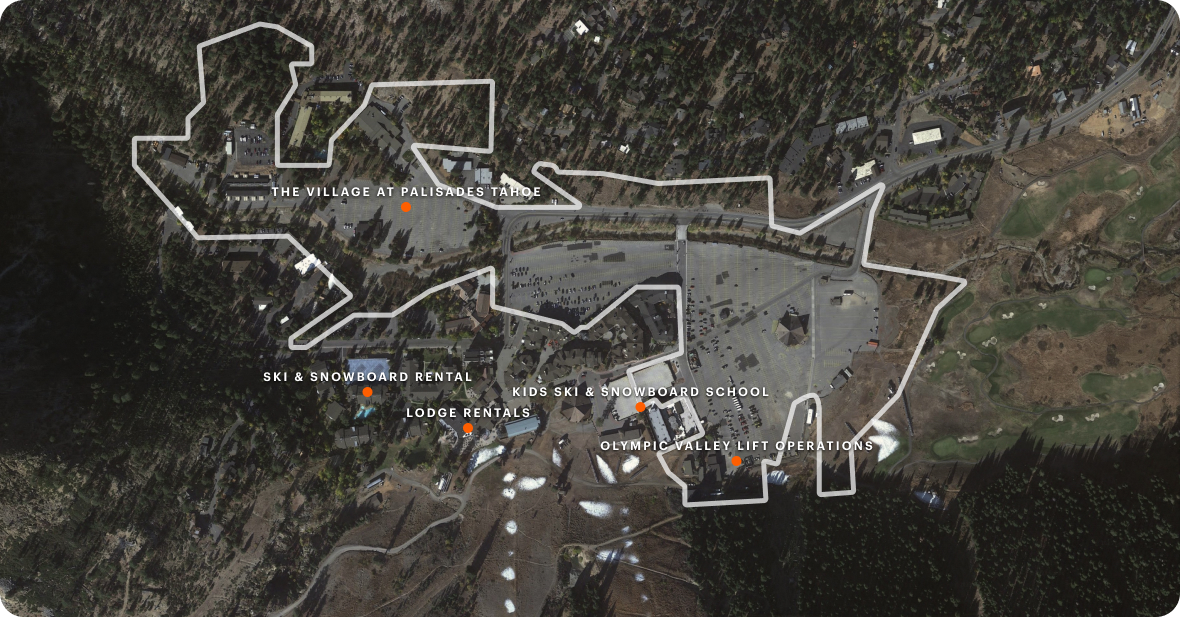
California is one of several states in the country that requires environmental review of any state or local action or project. The preparation of an environmental impact report, followed by circulation and solicitation of public comment, is similar to the environmental review process the Federal Government is required to follow under the National Environmental Protection Act. Environmental impact reports in California consider everything from the potential for groundwater or air pollution to traffic delays and the potential for noise pollution. State and local governments can only approve a project after considering all of the impacts and their potential mitigations. If the environmental impact report did not adequately consider a particular impact or how it may be mitigated, approval for the project could be rescinded. This is exactly what happened following the preparation and circulation of the environmental impact report for the Village at Palisades Specific Plan in 2016.
The initial draft environmental impact report was published in May 2015 and was open for public comment until July 2015. 321 members of the public as well as 15 different community organizations provided comments on the report. The largely negative public commentary focused on issues around fire risk, evacuation, water supply, noise and visual impacts from the project and construction of the project, and housing.
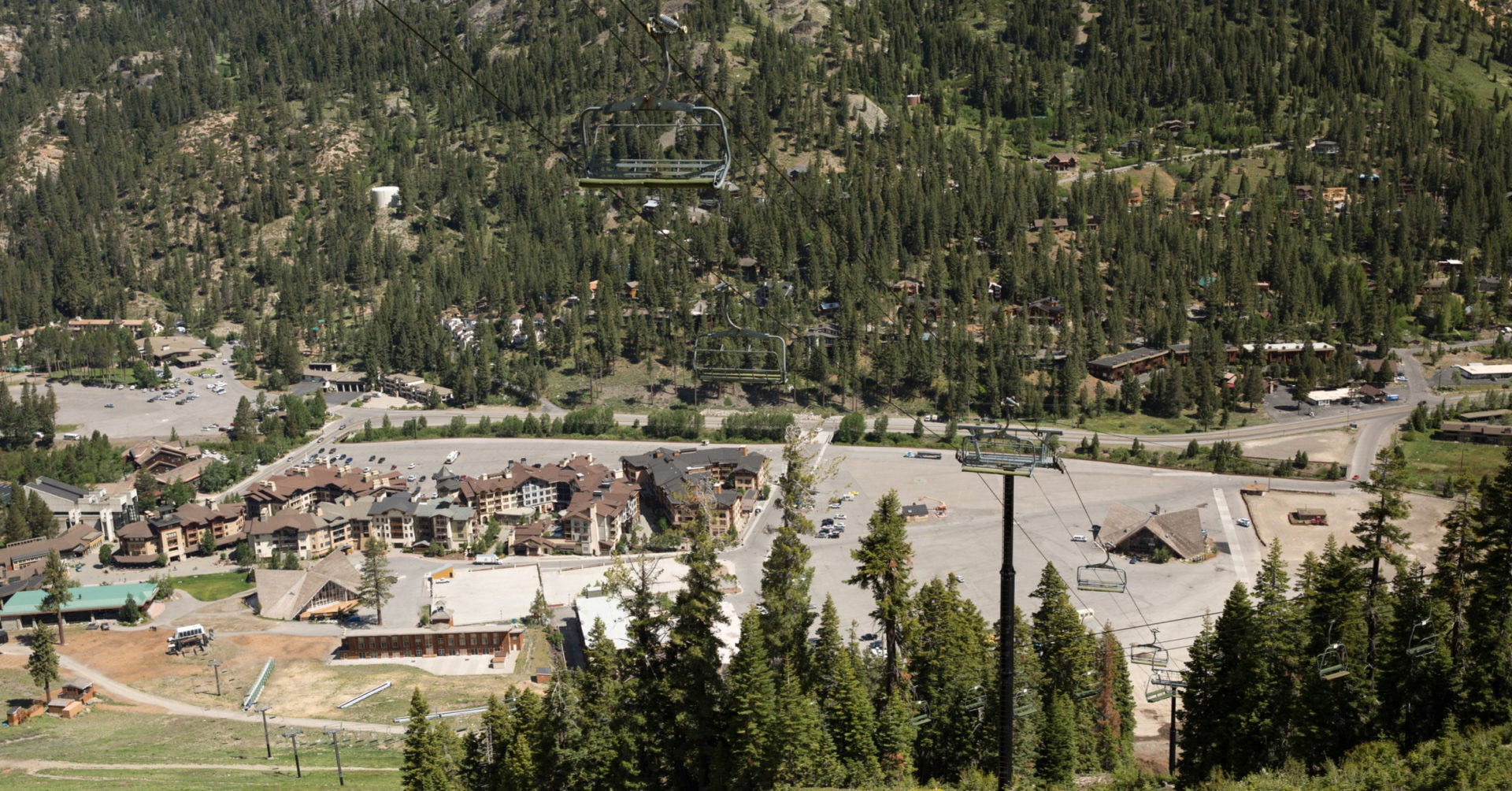
Sierra Watch, a conservation group based in the Lake Tahoe region, provided lengthy comments on the draft environmental impact report. When Tom Mooers, executive director of Sierra Watch, first saw early plans for the project in 2011, he remarked that the goal seemed to be to “squeeze every bit of development out of every inch of the property.” Sierra Watch engaged experts in hydrology, traffic, and fire danger to aid in their opposition to the project. Among Sierra Watch’s chief concerns were failures to properly consider impacts on traffic, water, and air quality in the Lake Tahoe basin, water supply in the project area, and emergency evacuation, along with a host of other planning and regulatory issues.
After the public comment period, a final environmental impact report was released by the county containing responses to many of the public comments it received and any modifications to the draft environmental impact report. The Olympic Valley Municipal Advisory Council held a meeting to take additional public comment and vote on a recommendation to approve or deny the project before it was considered by the Placer County Planning Commission and the Placer County Board of Supervisors. After hearing overwhelming opposition from the community, the Council voted to recommend denying the project.
The Placer County Board of Supervisors, voted four to one to approve the project in 2016. This approval came despite a recommended denial from the Olympic Valley Municipal Advisory Council and overwhelming community opposition to the project. Due to the long-term nature of the project, county approval did not mean construction started immediately, and indeed the project faced legal challenges shortly after approval.
Sierra Watch filed a lawsuit shortly thereafter arguing that the environmental impact report was deficient on several points, including water use, traffic, impacts on Lake Tahoe, and wildfire risk. The trial court rejected all of Sierra Watch’s arguments, but Sierra Watch appealed. After several years in court, the Court of Appeals found several of Sierra Watch’s arguments had merit and reversed the trial court’s decision, rescinding approvals for the project. Though Sierra Watch had alleged seven different shortcomings of the project, the Court of Appeals only agreed with four, namely impacts to Lake Tahoe, wildfire evacuation plans, construction noise from the project, and use of deferred mitigation in addressing several impacts of the project.
In 2022, Alterra reintroduced the project with no major changes. A revised environmental impact report was also circulated that sought to address the deficiencies found by the Court of Appeals. “It’s time for this plan to move forward. For our community and our resort, the cost of doing nothing is significant,” Dee Byrne, Former President and COO of Palisades Tahoe, said. Despite overwhelming public opposition, especially to the Mountain Adventure Camp, Alterra kept all major aspects of the plan. Public comment was taken again on the revised environmental impact report and more than 2,600 people wrote in, largely in opposition to the project.
Among the vast number of public commenters were local legends and freeskiing icons Scott and Robb Gaffney and famous Tahoe-based photographer Ming Poon. Robb Gaffney, who passed away in September 2023, said in his public comment on the environmental impact report:
“I hold the Lake Tahoe area deep in my heart, and I am highly concerned about its future, especially in light of this plan which could forever change and be devastating to this area. Several aspects of this plan, each on their own ‐ water availability, fire/evacuation, Lake Tahoe clarity, workforce housing—should be enough to require the developer to return to the drawing board.”
Scott Gaffney was also strongly opposed to the project, saying that it “is nothing more than greed disguised as ‘progress.’” Gaffney further said that this greed invites irreversible abuse of a cherished and special place. Ming Poon argued that roads and other infrastructure are already overloaded and that this project would bring too many people to Olympic Valley without suitable solutions for the extant problems.
Not all famous Tahoe skiers are against the project. JT Holmes, a freeskier and aerial athlete who has starred in seven Warren Miller films is in favor of the project. “I believe that the increased lodging and redesigned parking lot will improve traffic flow and efficiency while providing a more steady level of overnight visitors which the retailers and restaurants can rely upon. This will, in turn, help them staff their businesses because the amount of customers will be more steady and predictable,” Holmes wrote in his public comment. The Reno-Gazette Journal reported in 2013 that some of Palisades Tahoe’s top athletes, including JT Holmes, Jeremy Jones, Jonny Moseley, and Tamara McKinney had been involved in the planning of some of the Mountain Adventure Camp’s features, then called Grand Camp. Jones, Moseley, and McKinney all did not submit public comments on the project.
One of the key design goals of the Village Core is to create a dining and retail space that can serve guest needs without having to leave Olympic Valley. The idea behind this emphasis on a year-round walkable base area is that guests staying in the new lodging facilities would not be adding traffic and that day skiers at Palisades Tahoe might linger in the village after the mountain closes with more Après opportunities available. Spreading out peak traffic volumes over a longer timeframe may reduce trip times. While the Village Core may indeed succeed in diffusing traffic volume over a longer timeframe, the project will still bring several thousand more people to Olympic Valley, complicating a potential wildfire evacuation of the area.
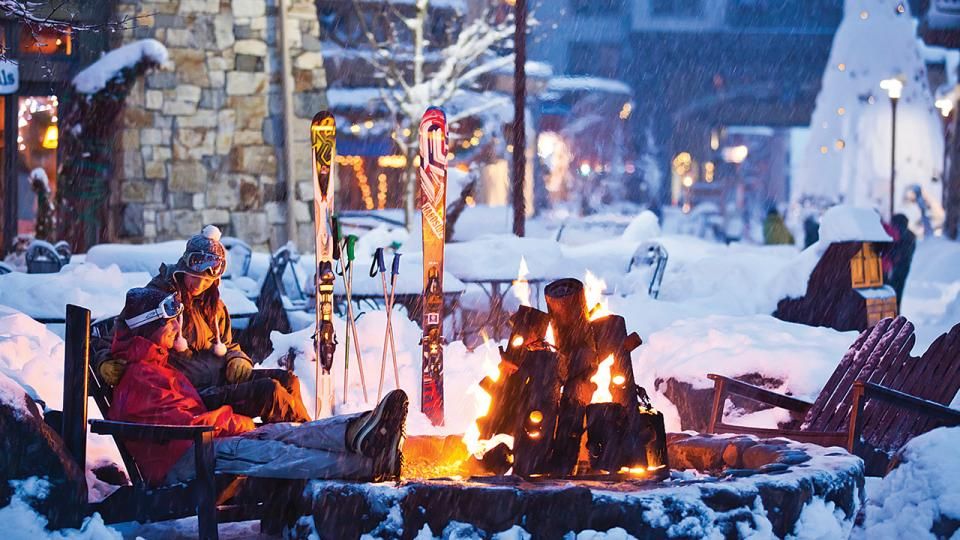
Since 2018, California has required analysis in environmental impact reports of wildfire risk for projects in ‘very high fire hazard severity zones,’ and Olympic Valley is such a zone. The first environmental impact report issued for this project provided extensive analysis and possible mitigations for the increased risk associated with bringing thousands of additional visitors to Olympic Valley. While the report argued that the project would not introduce significant potential for new fire ignition, because of modern building design and location away from surrounding forest land, it did identify evacuation in case of a large wildfire as a significant challenge. There is only one road in and out of Olympic Valley and once out of the valley; Highway 89 is the only way to get to the nearby interstate. As any peak weekend visitor to Palisades Tahoe can attest, the roads can get crowded. The worst-case estimate in the report of the evacuation time for the whole valley is around 11 hours. If a fire were to cut off access to Highway 89, the specific plan calls for residents and visitors of Olympic Valley to shelter in place in parking structures and surface lots.
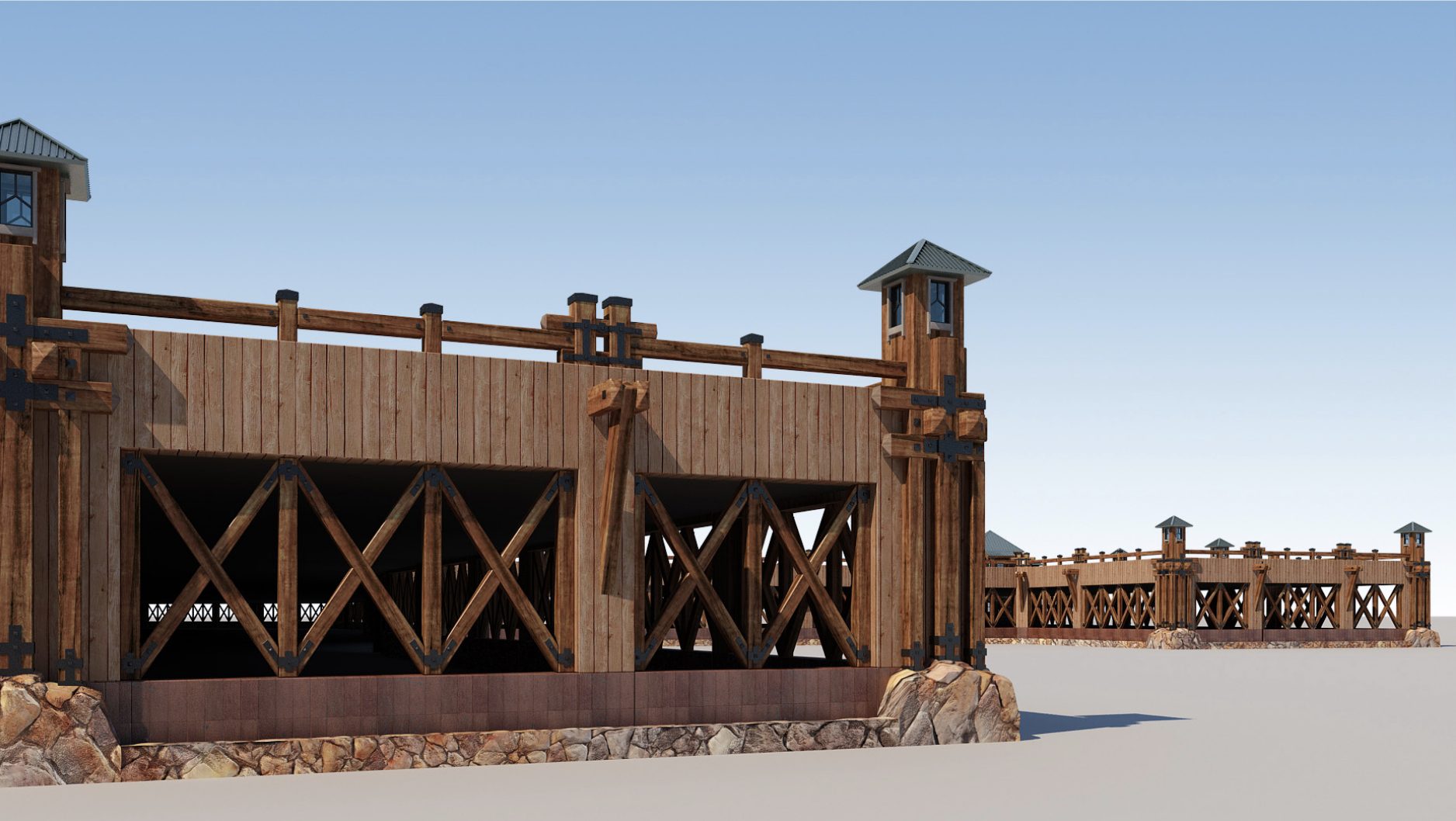
County planning staff argued at a recent Municipal Advisory Council meeting that 11-hour evacuation times and shelter-in-place policies are absolute worst-case scenarios. Ideally, the county said, evacuation orders would be given days in advance, allowing plenty of time for everyone to leave. The specific plan calls for the construction of a new fire station within the valley to help mitigate fire risk and that Palisades Tahoe pursues fuel-reducing and vegetation management projects nearly every summer. Indeed, Palisades Tahoe’s legendary ski terrain, specifically the granite chutes and cliffs found all around the resort, would offer some fire protection by slow propagation of any fires in the area. CalFire recently conducted a subdivision review for Olympic Valley and recommended a second egress route out of the valley be created in addition to Olympic Valley Road. Though Highway 89 still remains the only main road in the area, faster departure out of the valley could speed up evacuation times.

The rocky ridgeline that affords Palisades Tahoe some of the best ski terrain anywhere is termed the ‘Sierra Crest’ and runs roughly North by Northwest on the western side of Lake Tahoe. At the time the first environmental impact report was released, it was largely thought that wildfires could not cross the Sierra Crest due to the granite outcroppings and ridgelines, which offered significant protection to Lake Tahoe, Truckee, and other mountain communities. Since 2016, California has seen the Dixie fire in 2021, which burned upwards of 960,000 acres and destroyed the communities of Greenville, Canyondam, and Indian Falls, and the Caldor fire in 2021, which burned more than 220,000 acres and caused evacuation orders to be sent to more than 50,000 residents of El Dorado county, which includes South Lake Tahoe. These fires are the first known fires to cross the Sierra Crest. Both of their crossings were driven by strong winds that were able to carry embers over the ridge and into new fuels that were primed for ignition by one of the hottest summers on record in California.
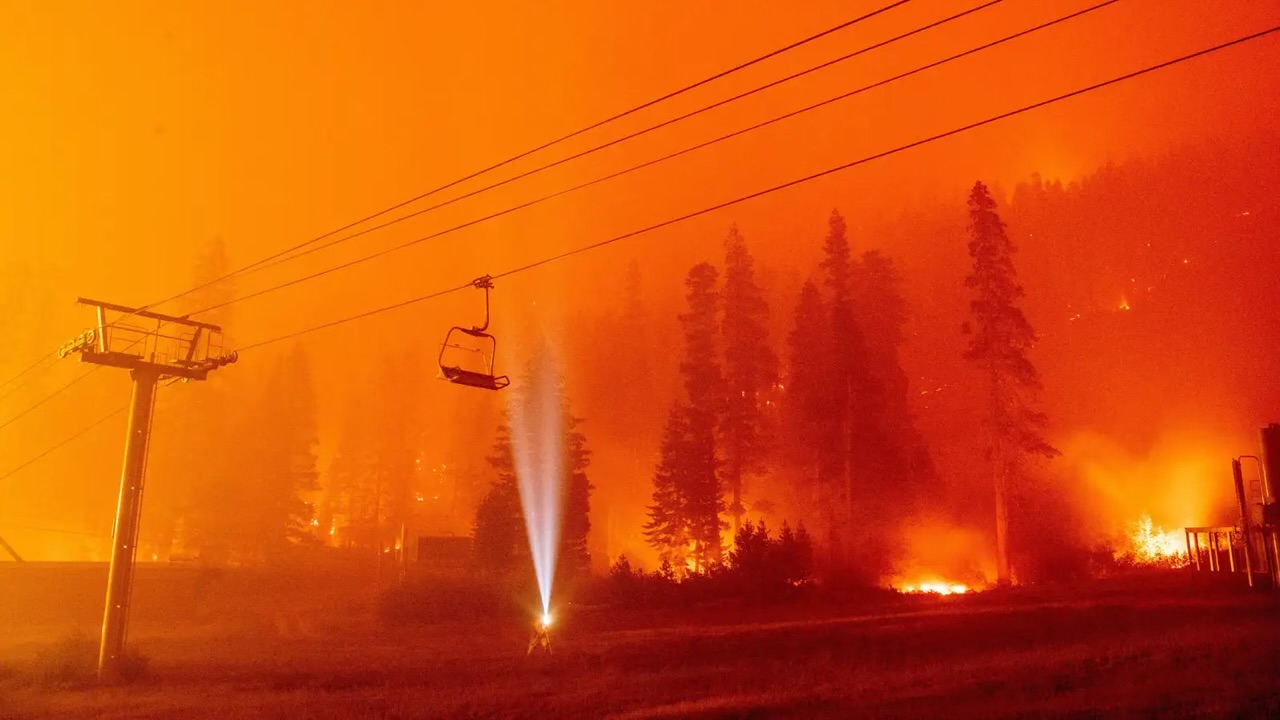
Several members of the public commented on the revised environmental impact report that the Caldor and Dixie fires represented ‘significant new information’ that would prompt the county to do a full analysis of the new fire conditions and their impact on the project. The county would be required to prepare additional analysis if the new information was not known and could not have been known at the time of the original study. The county pointed out in its master response to these comments that in the 2014 King Fire, another large fire in El Dorado county, was threatening to cross the Sierra Crest. Though the King fire did not eventually spread beyond the Sierra Crest, the county argued that the fact that fires have since jumped the Sierra Crest did not qualify as significant new information. SnowBrains asked Patrick Lacy, Public Relations Manager for Palisades Tahoe if Palisades Tahoe had any internal discussions or study of developing wildfire risk in Olympic Valley, but Lacy declined to comment.
In many of Placer County’s responses to comments on the revised environmental impact report, the idea of res judicata was used to dismiss the need to engage with concerns outside the bounds of the Court of Appeals decision. The county holds that the revised environmental impact report need only cover the deficiencies found by the Court of Appeals in the original report. Using the same framework as discussed above for wildfires, if there is no significant new information and if the Court of Appeals found no issue with it, the county says it did not need to address it in the revised environmental impact report. Affordable housing, especially for seasonal workers, was an issue in 2016. Though it has gotten worse, with new influxes of remote workers during the pandemic and an explosion in short term rentals, the county says it does not need a second look. The county offered no new analysis on several other issues including climate change and water supply, citing res judicata and a lack of significant new information. However, all approvals for the project were rescinded by the courts and all approvals for the project would have to be granted again by the Board of Supervisors. So while the county did not offer any new analysis in several key areas, supervisors will weigh all of the available information in all of these areas when making a decision to vote for or against approval.
The second approval process began in earnest on August 17, 2024, with a meeting of the Olympic Valley Municipal Advisory Council. This meeting gave county planning officials the opportunity to present the project and members of the public a chance to comment on the project. Municipal Advisory Councils represent the interests of various communities throughout the county and make recommendations to the Planning Commission based on input from the public. Nearly fifty people gave public comment, with only three people voicing strong support for the project. Many commenters were open to development in Olympic Valley and were in favor of more year-round offerings that would support local businesses. “I would love to see more activity throughout the year to support a strong retail base,” David Stepner, a member of the Olympic Valley Municipal Advisory Council, said during the meeting. Mark Nemeth, another council member said during council discussions, “I really want something to happen, but the way the plan is right now and the response from the community, I don’t feel right about it.” With only the possibility for an up or down vote on the project, the Council unanimously voted no, recommending to the county that a different reduced-size alternative plan be evaluated with community input.
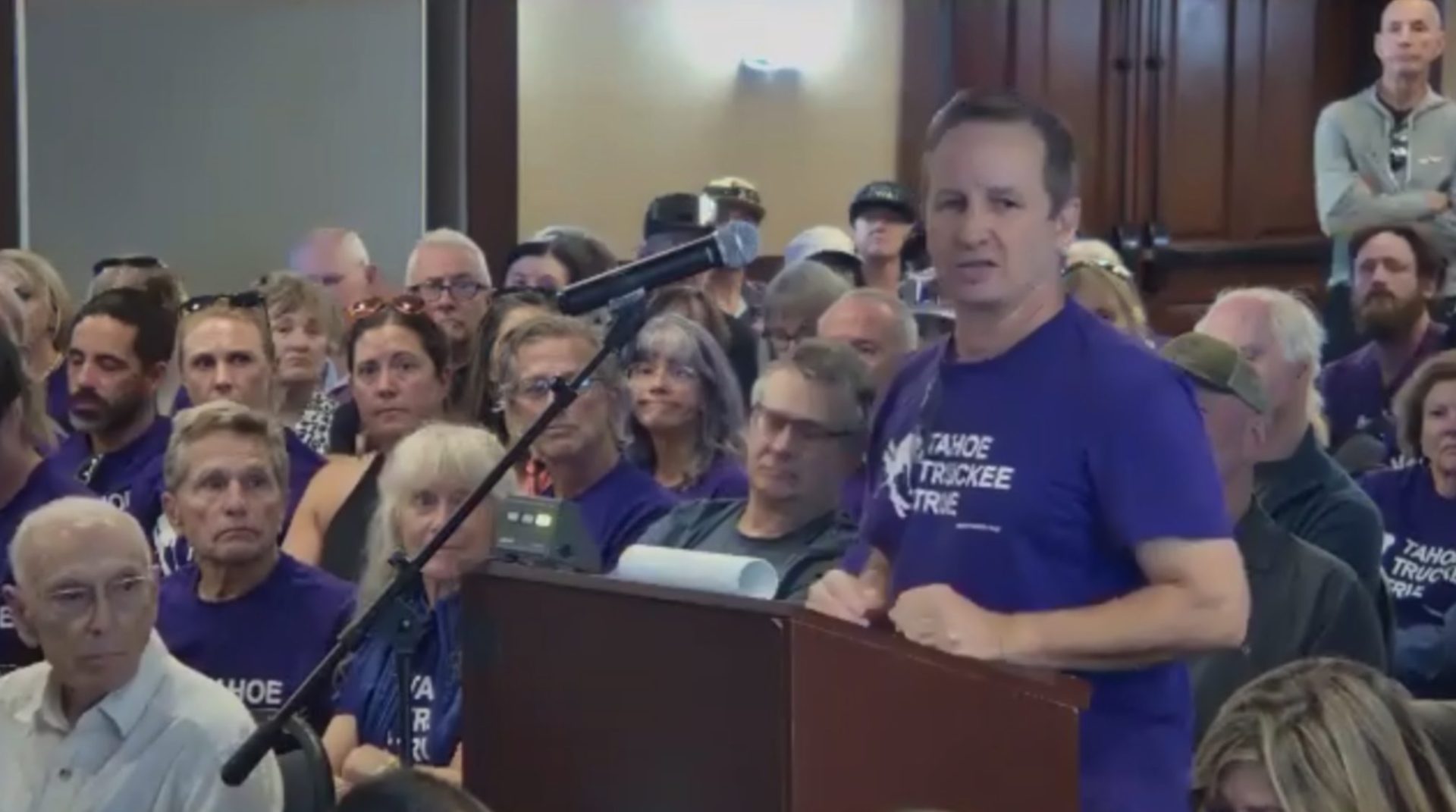
The original project submission to the county did include a reduced-density alternative. The original environmental impact report suggested that this alternative was not financially viable, as it would not deliver the 10-15% internal rate of return Alterra required. Friends of Olympic Valley, a community group representing residents and businesses, suggested that Palisades Tahoe did not demonstrate that all of the suggested amenities need to be included in one massive recreational facility. They proposed splitting any recreation facilities between several buildings throughout the village, allowing for lower building heights overall and promoting more pedestrian use. Friends of Olympic Valley has argued that the Reduced Density Alternative included in the environmental impact report was “designed to fail” because it included expensive parking structures and a full-sized Mountain Activity Center but with fewer visitors. Its plan reduces the project size to just the Village Core, allowing areas surrounding the Village Core to be used for surface parking, and eliminating the costly parking structures. The plan was submitted to the county in 2016 just a day or two before the Board of Supervisors voted on approval of the project. At the time, the Board decided not to consider it as a viable alternative, because the plan that Friends of Olympic Valley submitted did not include the necessary analysis to address how the Reduced Size Plan would change any impacts or needed mitigations. Since the project’s reintroduction and the subsequent revised environmental impact report, county planning staff have not presented any analysis specific to the proposed Reduced Size Alternative to determine if it could still meet Alterra’s objectives while lessening impacts and increasing community support.
Tom Mooers told SnowBrains in a phone interview that Sierra Watch has had several meetings with Alterra through the years to discuss the project. Mooers said that Sierra Watch has gone forward in a variety of ways in good faith to seek compromise and collaboration and Alterra has been unwilling to talk about anything except what they first proposed. When asked about these meetings and about community input on the project, Patrick Lacy, public relations manager for Palisades Tahoe, declined to comment, accusing Sierra Watch of “ongoing dissemination of misinformation to the public,” which he said “does not merit our engagement.” In a separate press release, Dee Byrne, Former Palisades Tahoe President and COO said that community feedback has been incorporated in the plan.” In a prior press release dated August 6, 2024, Palisades Tahoe stated that the specific plan included significant public input gathered during over 300 community meetings and participation in the process by more than 5,000 interested individuals.
When planning officials make recommendations or select alternatives, they don’t need to choose the alternative that minimizes impact; they only need to have a record that they have considered any impacts. The ultimate approval for the project comes from the Placer County Board of Supervisors, whose members are elected by county residents in each of its five districts to serve four-year terms. Local elections, like those for Board of Supervisor seats, have notoriously low turnouts. The ramifications of low participation in local elections are that there is reduced accountability to the electorate. With low media coverage and low name recognition for county officials, many voters may not have any recollection of major county events, such as the approval of a project despite overwhelming public opposition.
On September 5, 2024, the Village at Palisades Specific Plan went before the Placer County Planning Commission. After hearing a presentation by county staff, the Planning Commission took public comment, then deliberated and voted to recommend the project for approval to the County Board of Supervisors. Shortly before the public comment period started, Dee Byrne, Former President and COO of Palisades Tahoe, announced that entitlements for a water park were not being sought. “We were careless in identifying every possible use for the facility,” Byrne said. “It’s crystal clear that the local community doesn’t want a water park.” Though the staff recommendations to the council were amended to remove any water-park-like uses from the Mountain Activity Center, including lazy rivers, water slides, rope swings, and indoor water skiing, the last-minute amendment did not offer any adjustments in size to the 90,000 square foot, 96-foot tall building.
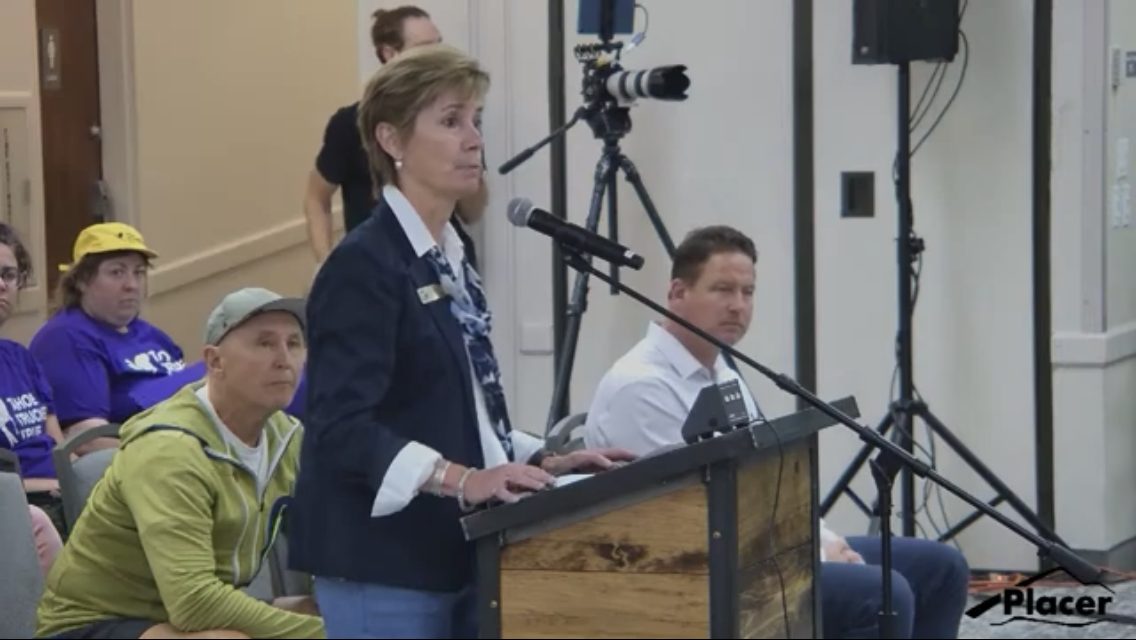
Public comment on the project was still largely negative, but with a higher volume of supportive comments than were voiced at the Municipal Advisory Council meeting. Many of the supporters were Palisades Tahoe employees, including several members of mountain management. Negative commenters still voiced concerns over wildfire evacuations, the overall size of the project, and their perceived lack of community input on the project. Many were still opposed specifically to the Mountain Adventure Center because they felt it went against the mountain lifestyle of Olympic Valley, a goal shared in the Olympic Valley General Plan and the Placer County General Plan. Supporters still voiced concerns over a seasonal economy and the need to bring more visitors and businesses to Olympic Valley year-round. Supporters also highlighted the positive impacts on the county the extensive tax revenue would bring, along with the many public benefits that would be provided by Alterra as part of the development agreement for the project.
Several planning commissioners and members of the county staff remarked that the development agreement for the project included enormous public benefits, including millions of dollars to be paid into funds to improve regional transit, workforce housing, and conservation efforts in the Lake Tahoe basin. Richard Johnson, At-Large Planning Commissioner, questioned Bryan Elliott, Chief Development Officer for Alterra, during the Planning Commission Meeting about what specifically would achieve Alterra’s goal of making Palisades Tahoe a world-class destination ski resort. Elliott described how the goal was to develop options that give guests more ways to spend money when visiting the resort. Whether through lodging, buying dinner, or retail, the project hopes to capture more dollars per visitor. Dee Byrne added by saying that visitation hasn’t grown on the weekends. “We need more visitation midweek and people staying more days.”
Amber Beckler, Planning Commissioner for District 4, expressed hesitation about approving the project due to the large amount of public opposition. “At the same time that I think it’s a great opportunity for redevelopment, I also have a hard time not taking into account the community feedback. It’s obvious that the community is ok doing something.” Robyn Dahlgree, Planning Commissioner for District 1, pushed back during her deliberation on the idea that the public is largely opposed to the project.
“This is your community. You live here. It’s also their business, their land, and their right to develop within the guidelines and zoning. We didn’t hear from the whole community. We heard from a lot of detractors, some supporters, and there’s a lot more people we didn’t hear from. So I’m not convinced that it’s as the MAC chairperson had said, that it’s the overwhelming opinion of the community.”
While Commissioner Dahlgree suggests that the sample of public comments collected on the project may not reflect public opinion, she did not provide any other information to support a different understanding of public opinion.
In the end, the Placer County Planning Commission voted to recommend approval of the project to the Board of Supervisors. Amber Beckler was the lone no-vote. With the water park now off the table, community support for the project could see substantial growth before the Board of Supervisors votes on approvals in the late fall. It has been made clear that there is an appetite for more development in Olympic Valley from both residents and Alterra. Several planning commissioners and county officials remarked on the extensive public benefits Alterra is offering as part of the project. While these public benefits may go a long way in working towards solutions to some of the biggest issues plaguing Olympic Valley and the Tahoe region, the Village at Palisades Tahoe will almost certainly exacerbate many of these issues, including traffic, wildfire safety, and affordable housing. If the project is approved, construction may not start for several years, as the timing of each phase of the project is market-dependent. Each phase of the project will be individually presented to the county for approval, meaning this is likely not the last chapter in the fight over the development of Olympic Valley.
More from Zach Armstrong:
- How the Fatal GS Bowl Avalanche at Palisades Tahoe, CA, Happened and Why it Could Happen Again
- Public Money Gets Funneled into Massive Deer Valley, UT, Expansion
- Sending It to the Legislature: Ski Mountaineer Caroline Gleich’s Campaign for U.S. Senate
- Inside the Ski Industry’s Post-Pandemic Boom
- How Eldora, CO, Ski Patrollers Finally Got Their Union